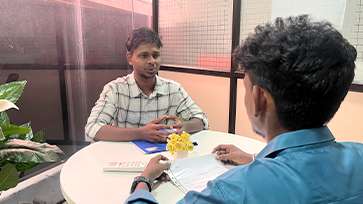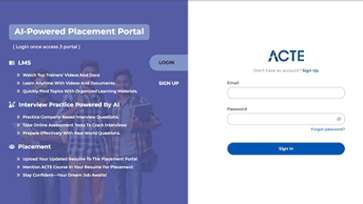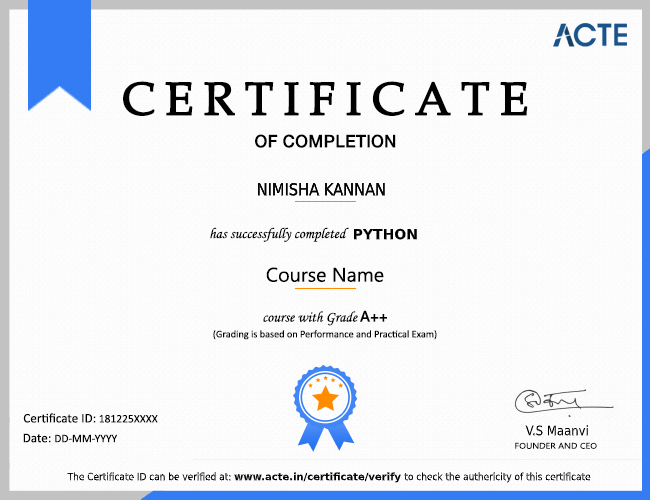In this course you will learn how to program in R and how to use R for effective data analysis. You will learn how to install and configure software necessary for a statistical programming environment and describe generic programming language concepts as they are implemented in a high-level statistical language. The course covers practical issues in statistical computing which includes programming in R, reading data into R, accessing R packages, writing R functions, debugging, profiling R code, and organizing and commenting R code. Topics in statistical data analysis will provide working examples..Start learning with us ACTE R Programming Classroom & Online Training Course.
R Programming is very useful for career.Careers in R programming are associated with the data science and business analytics profession. ... R programmers are a good fit for the research-oriented industry for statistical model implementation for data analysis. professionals want to upgrade their career in data science R programming is a preferred choice.
R Programming, have great scope, Scope is high Basically, R is now considered as the most popular analytic tool.R Careers offers bright jobs for any data scientist he may be any fresher or experienced. Organizations expect many of the new hires with knowledge of R and they want them to be familiar with the R tool.
Even as a fresher, you can get a job in R Programming domain. R is the name of a popular programming language that has become the tool of choice for data scientists and statisticians around the world. Companies are using analytics to predict things like pricing of their products, how much to spend on ads, whether a drug will turn out to be successful or not etc. and R is helping them analyse historical data to make these predictions.
The business analytics field has been dominated by paid tools such as SAS, Statistica and SPSS (IBM). Even though some of these tools can be very expensive (with software licenses running into millions of dollars), the value coming out of their application is far more and hence companies did not mind spending so much.
We are happy and proud to say that we have strong relationship with over 700+ small, mid-sized and MNCs. Many of these companies have openings for R Programming. Moreover, we have a very active placement cell that provides 100% placement assistance to our students. The cell also contributes by training students in mock interviews and discussions even after the course completion.
Coin package in R provides various options for re-randomization and permutations based on statistical tests. When test assumptions cannot be met then this package serves as the best alternative to classical methods as it does not assume random sampling from well-defined populations.
- Knowledge of statistics theory in mathematics.
- You should have solid understanding of statistics in mathematics.
- Understanding of various type of graphs for data representation.
- Prior knowledge of any programming.
Learn R. Can someone with no programming knowledge learn “R”? The answer is yes! ... Despite not having any previous programming experience , I analyzed my first data set of more than 20,000 data points in only a couple of months.
Our course ware is designed to give a hands-on approach to the students in R Programming. The course is made up of theoretical classes that teach the basics of each module followed by high-intensity practical sessions reflecting the current challenges and needs of the industry that will demand the students’ time and commitment.
Yes Definitely! From my point of view learning, R language has a worth to learn. R is the best programming language to perform analytical operation. The number of applications such as healthcare, finance, media use R programming to analyze their data.
Advanced R Programming takes around 1 month to master to a level so that you can start writing analytics functions.
If you have experience in any programming language, it takes 7 days to learn R programming spending at least 3 hours a day. If you are a beginner, it takes 3 weeks to learn R programming. In the second week, learn concepts like how to create, append, subset datasets, lists, join.
- Backed by a Huge, Active Community.
- Comprehensive Library Support.
- Cross-Platform Compatibility.
- Data Visualization at its Best.
- Develop Interactive, Powerful Web Apps With Shiny.
- Go-to Option for Statistical Analysis and Data Science.
- High Market Demand With High-Paying Roles.
- Major Companies Trust R.
R programming scope
Global variables
Global variables are those variables which exists throughout the execution of a program. It can be changed and accessed from any part of the program.
However, global variables also depend upon the perspective of a function.
For example, in the above example, from the perspective of inner_func(), both a and b are global variables.
However, from the perspective of outer_func(), b is a local variable and only a is global variable. The variable c is completely invisible to outer_func().
Local variables
On the other hand, Local variables are those variables which exist only within a certain part of a program like a function, and is released when the function call ends.
In the above program the variable c is called a local variable.
If we assign a value to a variable with the function inner_func(), the change will only be local and cannot be accessed outside the function.
This is also the same even if names of both global variable and local variables matches.
For example, if we have a function as below.
outer_func <- function(){
a <- 20
inner_func <- function(){
a <- 30
print(a)
}
inner_func()
print(a)
}
When we call it,
> a <- 10
> outer_func()
[1] 30
[1] 20
> print(a)
[1] 10
We see that the variable a is created locally within the environment frame of both the functions and is different to that of the global environment frame.
Accessing global variables
Global variables can be read but when we try to assign to it, a new local variable is created instead.
To make assignments to global variables, superassignment operator, <<-, is used.
When using this operator within a function, it searches for the variable in the parent environment frame, if not found it keeps on searching the next level until it reaches the global environment.
If the variable is still not found, it is created and assigned at the global level.
outer_func <- function(){
inner_func <- function(){
a <<- 30
print(a)
}
inner_func()
print(a)
}
On running this function,
> outer_func()
[1] 30
[1] 30
> print(a)
[1] 30
When the statement a <<- 30 is encountered within inner_func(), it looks for the variable a in outer_func() environment.
When the search fails, it searches in R_GlobalEnv.
Since, a is not defined in this global environment as well, it is created and assigned there which is now referenced and printed from within inner_func() as well as outer_func().































